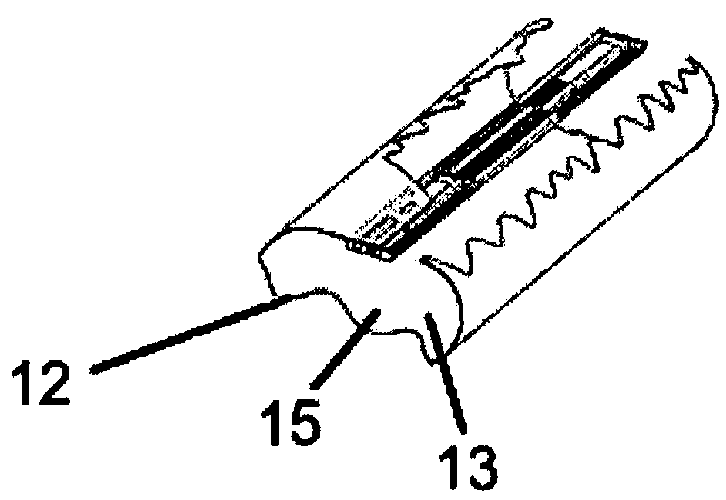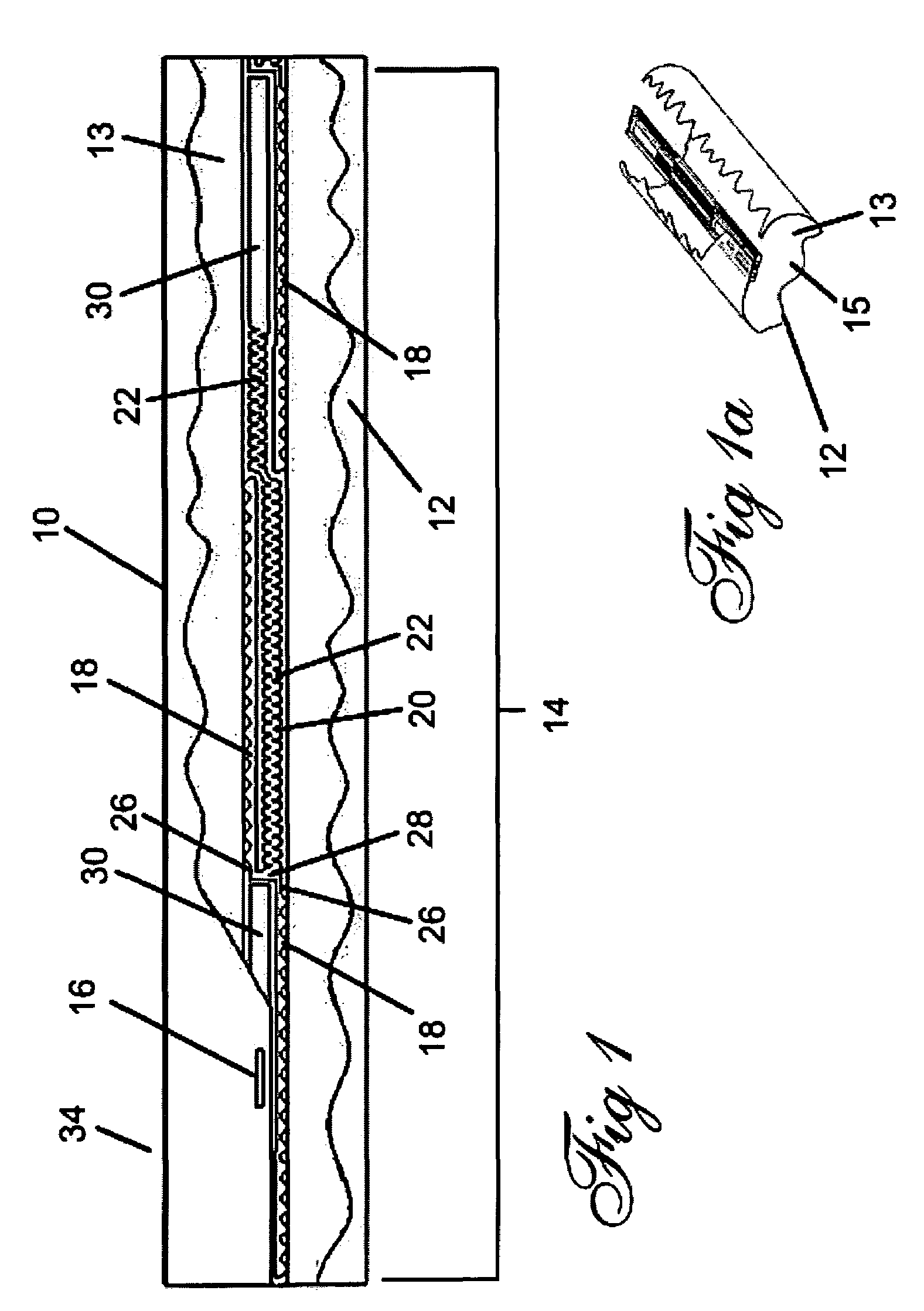Drip irrigation system employing parallel adjacent flowpaths
a technology of parallel adjacent flowpaths and drip irrigation, which is applied in the field of drip irrigation, can solve the problems of limiting the space where emitters or drippers might be placed, limiting the potential spacing of drippers or emitters to each other, and limiting the proximity of emitters or drippers to each other, so as to improve the stability and consistency of flow rate, and improve the resistance to clogging of outlet water channels and capillaries
- Summary
- Abstract
- Description
- Claims
- Application Information
AI Technical Summary
Benefits of technology
Problems solved by technology
Method used
Image
Examples
Embodiment Construction
[0052]Referring now to the drawings, FIGS. 1–6 depict the various embodiments and engagements of the disclosed method and apparatus of the drip irrigation device 10. As shown in FIG. 1, which depicts a lateral cross-section of a portion of the drip irrigator tape according to one embodiment of the present invention. More specifically, FIG. 1 shows a segment of the tape or hose 12 having a plurality of sequentially positioned individual fluid disbursement assemblies 14 or emitters providing regulated communication of pressurized fluid flowing inside the interior passage 13 or conduit defined by the sidewall 15 of the hose 12, to sequentially positioned means for discharge, currently shown by the outlet port 16. As is the case with all embodiments of the device 10, the fluid intake for the subsequent sequentially positioned fluid disbursement assembly 14 begins prior to the termination of the fluid outlet for the preceding fluid disbursement assembly 14 using substantially parallel ad...
PUM
 Login to View More
Login to View More Abstract
Description
Claims
Application Information
 Login to View More
Login to View More - R&D
- Intellectual Property
- Life Sciences
- Materials
- Tech Scout
- Unparalleled Data Quality
- Higher Quality Content
- 60% Fewer Hallucinations
Browse by: Latest US Patents, China's latest patents, Technical Efficacy Thesaurus, Application Domain, Technology Topic, Popular Technical Reports.
© 2025 PatSnap. All rights reserved.Legal|Privacy policy|Modern Slavery Act Transparency Statement|Sitemap|About US| Contact US: help@patsnap.com



